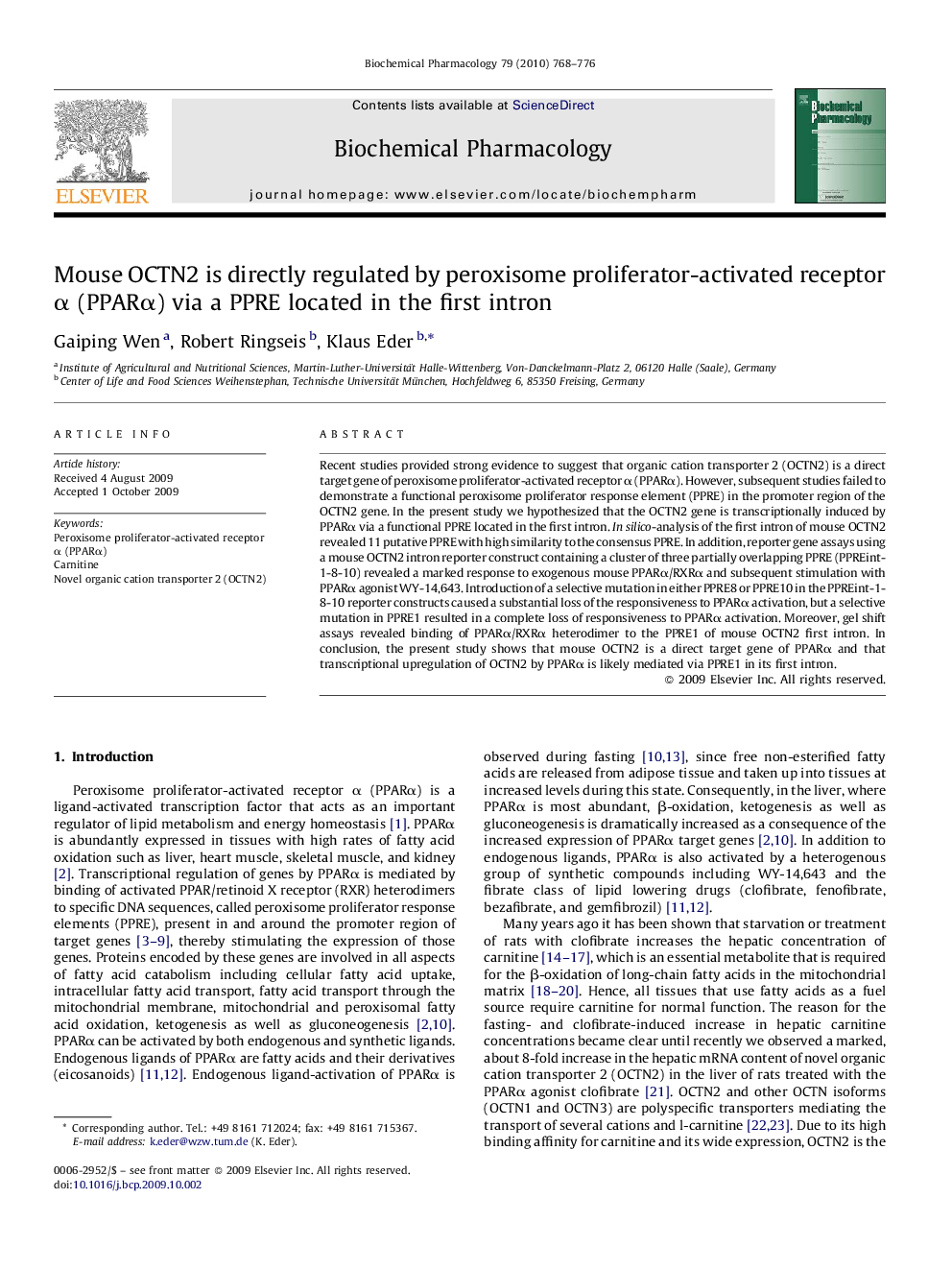| Article ID | Journal | Published Year | Pages | File Type |
|---|---|---|---|---|
| 2514464 | Biochemical Pharmacology | 2010 | 9 Pages |
Recent studies provided strong evidence to suggest that organic cation transporter 2 (OCTN2) is a direct target gene of peroxisome proliferator-activated receptor α (PPARα). However, subsequent studies failed to demonstrate a functional peroxisome proliferator response element (PPRE) in the promoter region of the OCTN2 gene. In the present study we hypothesized that the OCTN2 gene is transcriptionally induced by PPARα via a functional PPRE located in the first intron. In silico-analysis of the first intron of mouse OCTN2 revealed 11 putative PPRE with high similarity to the consensus PPRE. In addition, reporter gene assays using a mouse OCTN2 intron reporter construct containing a cluster of three partially overlapping PPRE (PPREint-1-8-10) revealed a marked response to exogenous mouse PPARα/RXRα and subsequent stimulation with PPARα agonist WY-14,643. Introduction of a selective mutation in either PPRE8 or PPRE10 in the PPREint-1-8-10 reporter constructs caused a substantial loss of the responsiveness to PPARα activation, but a selective mutation in PPRE1 resulted in a complete loss of responsiveness to PPARα activation. Moreover, gel shift assays revealed binding of PPARα/RXRα heterodimer to the PPRE1 of mouse OCTN2 first intron. In conclusion, the present study shows that mouse OCTN2 is a direct target gene of PPARα and that transcriptional upregulation of OCTN2 by PPARα is likely mediated via PPRE1 in its first intron.
Graphical abstractFigure optionsDownload full-size imageDownload as PowerPoint slide
